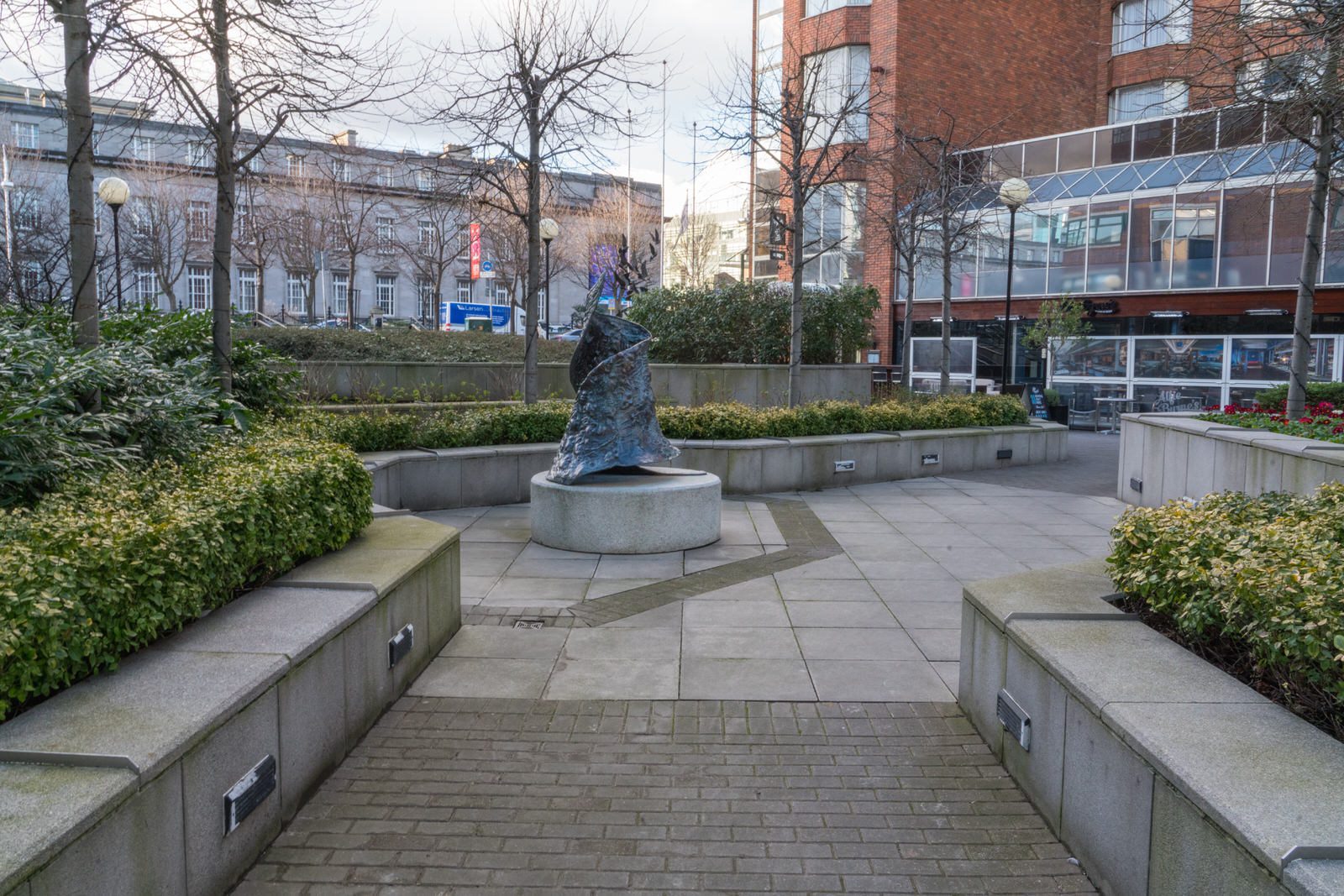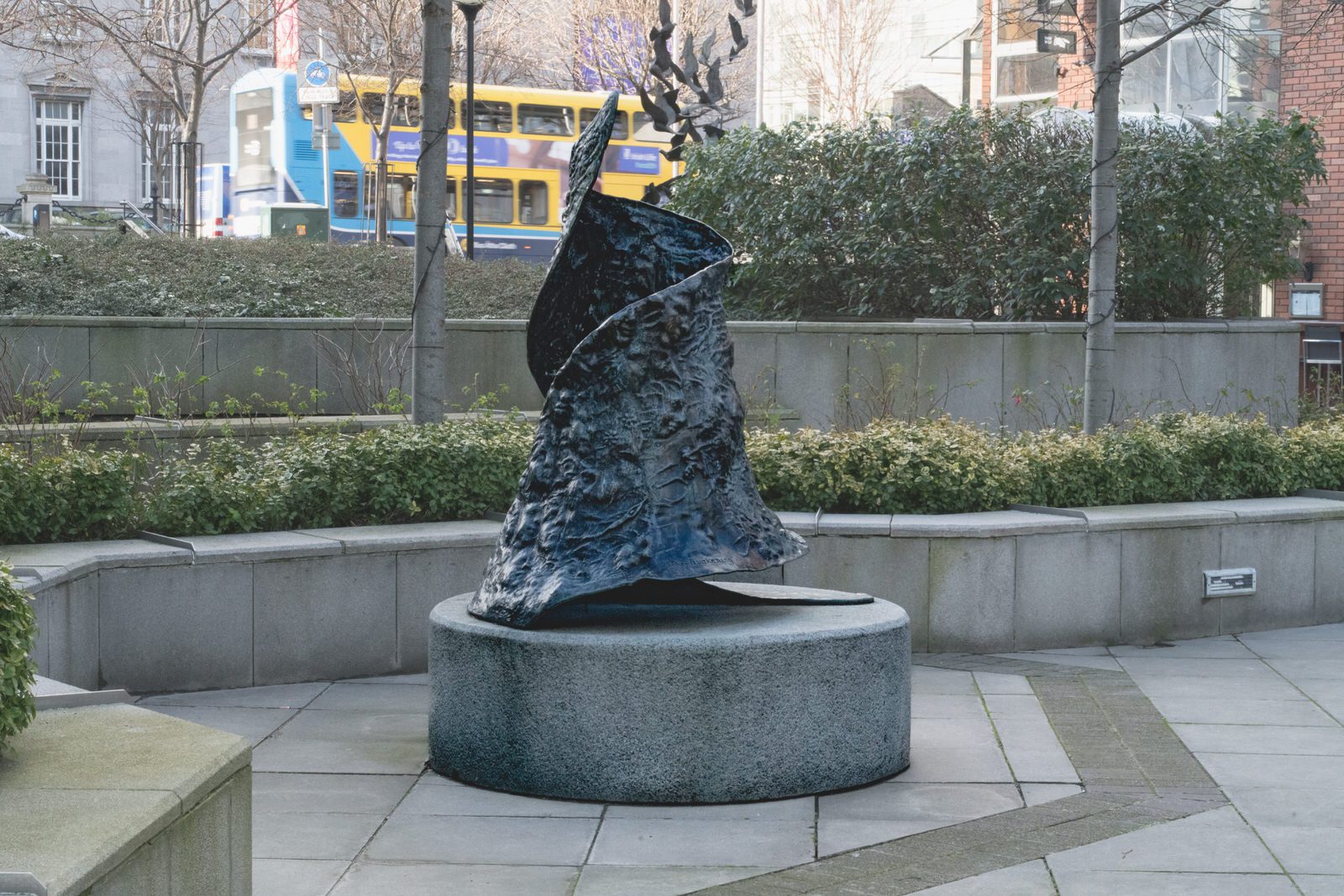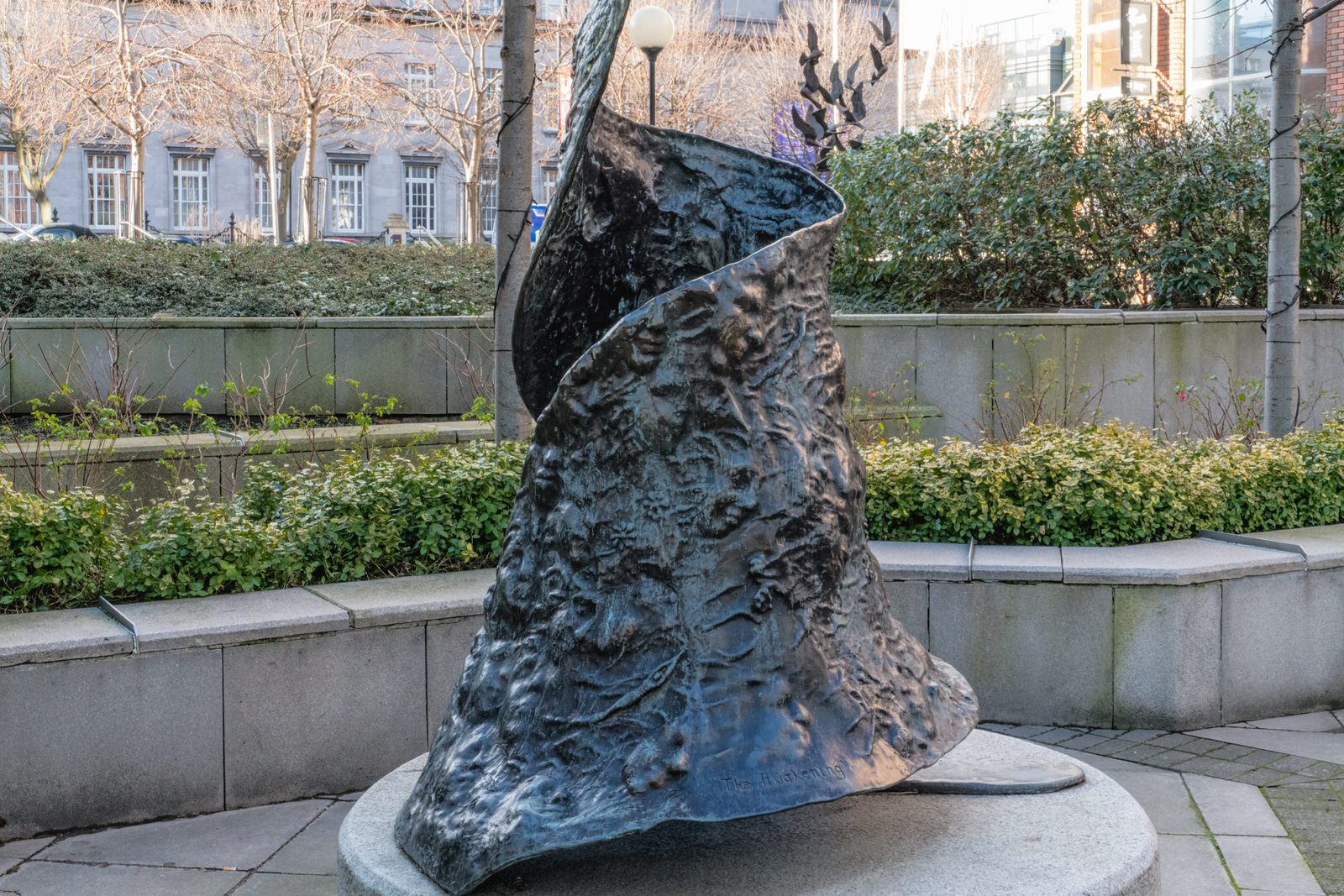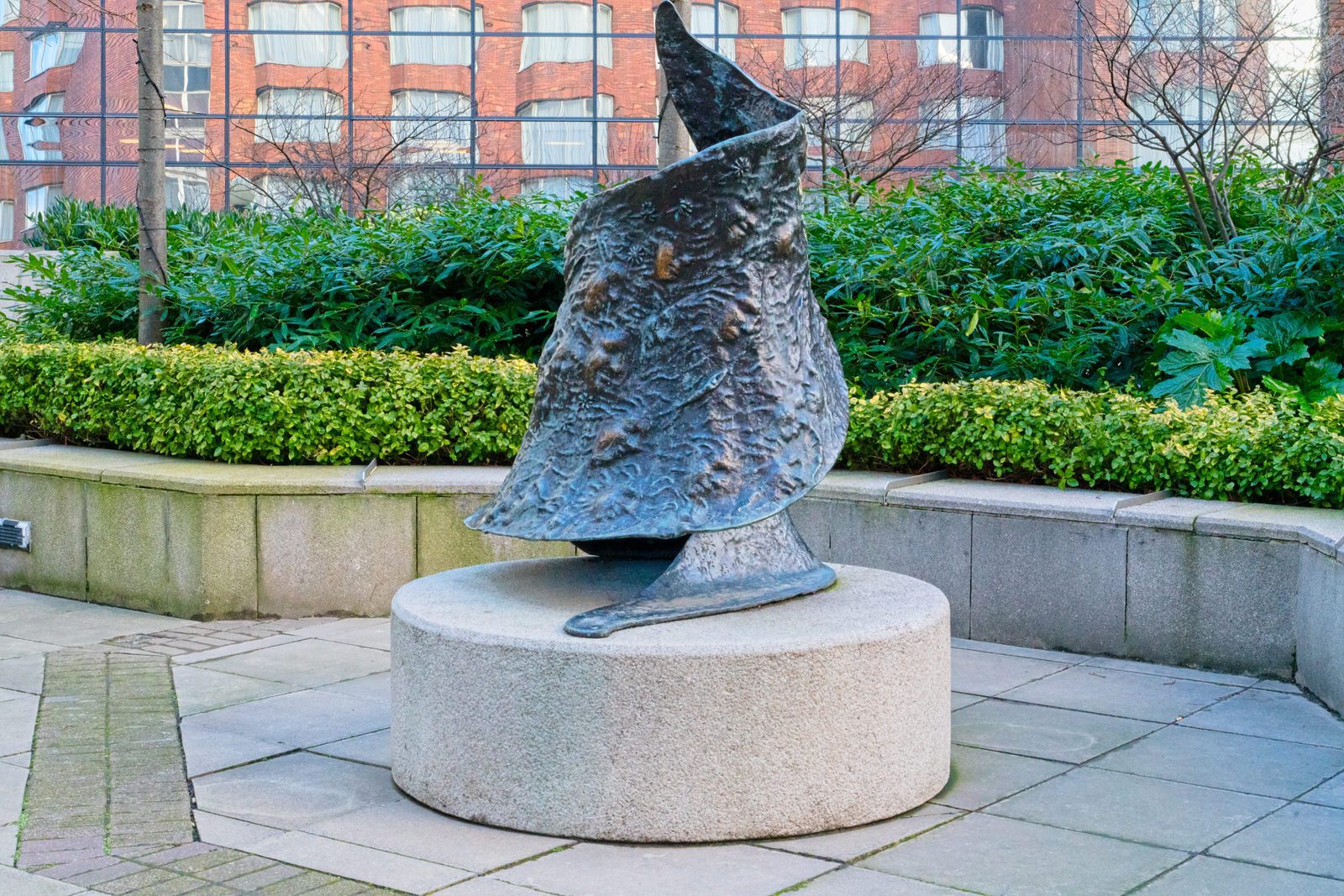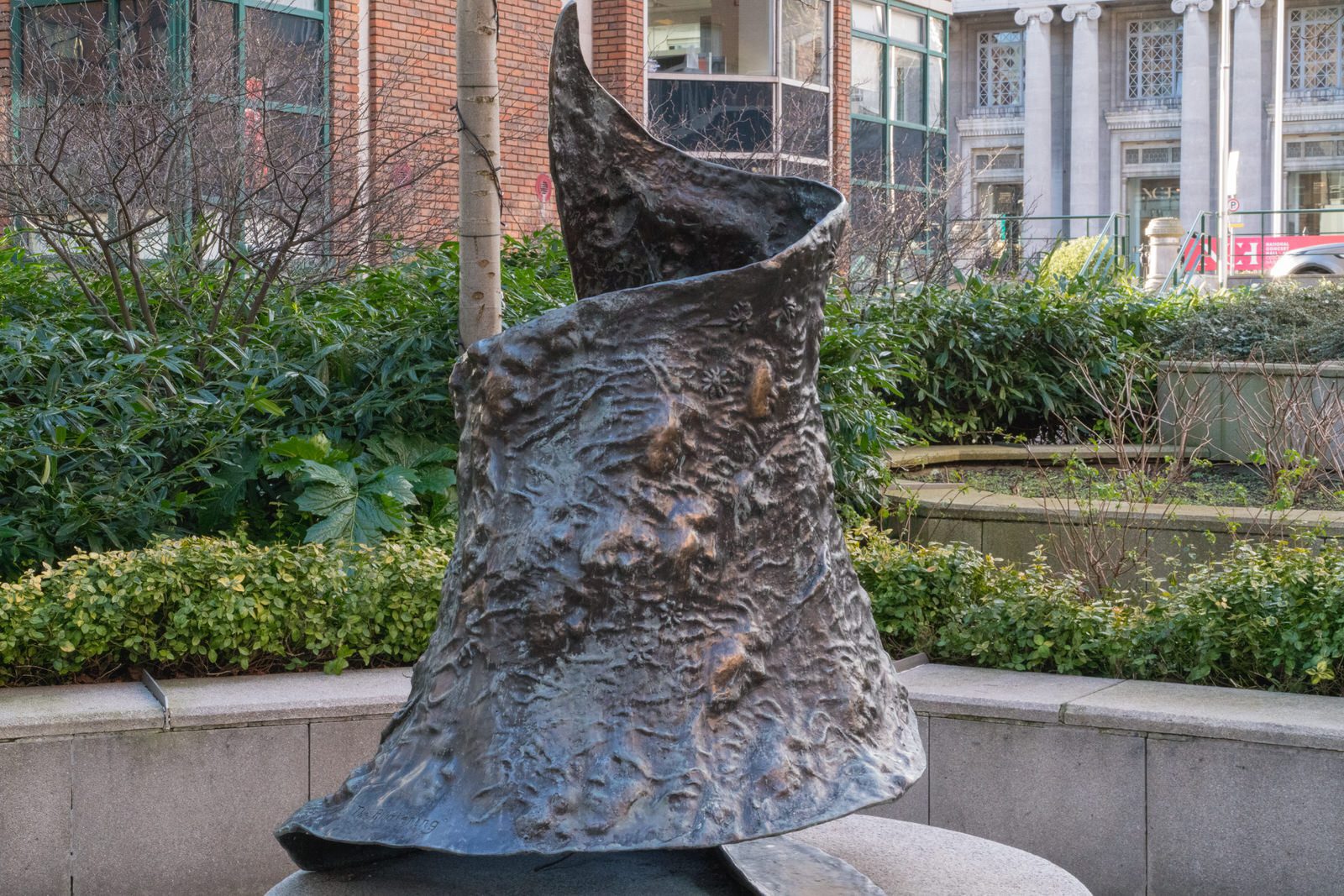PHOTOGRAPHED IN FEBRUARY 2014 BUT PUBLISHED IN FEBRUARY 2023
I photographed this back in 2018 and as much of the artwork in the piazza has now been removed I am not sure if this sculpture is still on public display. When I photographed it I was unable to determine what is was and who was the artist. I have now decided that there is no point in waiting for further information to come my way.
Not long ago I discovered that I have in the past described this as ‘Earlsfort Plazza’ rather than ‘Earlsfort Piazza’. At the time I thought that PLazza was an alternative spelling for Plaza.
Every new developments in Ireland feature plazas or in this casa a piaza which are effectively privately owned public spaces which, despite all claims, are in no way public.
Throughout Spanish America and the Spanish East Indies, the plaza mayor of each center of administration held three closely related institutions: the cathedral, the cabildo or administrative center, which might be incorporated in a wing of a governor’s palace, and the audiencia or law court. The plaza might be large enough to serve as a military parade ground. At times of crisis or fiesta, it was the space where a large crowd might gather. Like the Italian piazza, the plaza remains a centre of community life that is only equaled by the market-place.
Most colonial cities in Spanish America and the Philippines were planned around a square plaza de armas, where troops could be mustered, as the name implies, surrounded by the governor’s palace and the main church. A plaza de toros is a bullring.
In the US, they can be used to open spaces for low income neighbourhoods, and can also the overall aesthetic of the surrounding area boosting economic vitality, pedestrian mobility and safety for pedestrians. Most plazas are created out of a collaboration between local non-profit applicants and city officials which requires approval from the city.
In modern usage, a plaza can be any gathering place on a street or between buildings, a street intersection with a statue, etc. Today’s metropolitan landscapes often incorporate the “plaza” as a design element, or as an outcome of zoning regulations, building budgetary constraints, and the like. Sociologist William H. Whyte conducted an extensive study of plazas in New York City: his study humanised the way modern urban plazas are conceptualised, and helped usher in significant design changes in the making of plazas.

